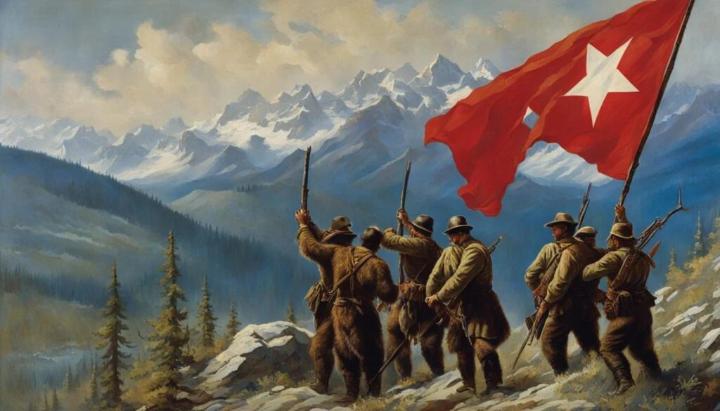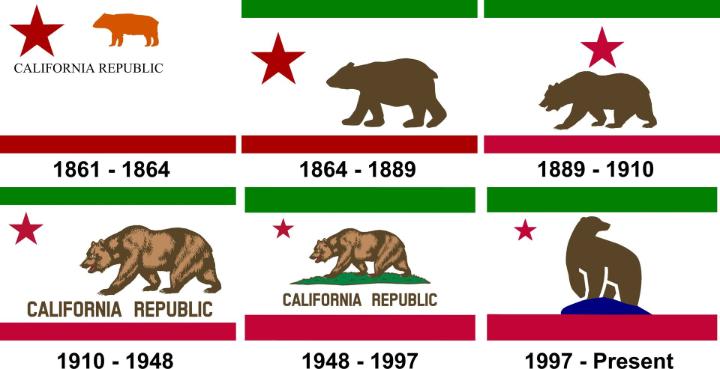The California State Flag, commonly referred to as the "Bear Flag," is more than a waving banner in the wind-it represents the strength, independence, and cultural wealth of California. From its beginnings in rebellion to its worldwide recognition, the flag is a living artifact of California's history. But how did this iconic flag come to be, and what does it truly represent? Let's explore the fascinating historical timeline of the California State Flag.
Early History of California
Before California joined the United States as a state, its land was shaped by various cultures, governments, and the flags they flew. Each flag marked shifts in power and identity, paving the way for California's rich history.
Flags Before Statehood Throughout its early years, California saw a great variety of flags being raised above the soil. The early flags were those of native Indian tribes, Spanish colonists, and later, the Mexican government.
Spanish Colonial Period (1769-1821):
The Spanish Empire raised the missions, presidios, and pueblos while flying the Cross of Burgundy.
Mexican Rule (1821–1846):
In 1821, when Mexico declared independence from Spain, the Mexican tricolor replaced the Spanish flag that had been waving over those lands for so long and represented the new Mexican republic. However, tensions between the settlers planted a seed of rebellion. The battle for power, in laying down the basis for California's character, paved the way for the flag that would fuel a revolution; the Bear Flag.

Bear Flag Revolt
The Bear Flag is what comes to mind when people hear the name California flag. However, very few know the dramatic story behind it, though it was made during the Bear Flag Revolt of 1846. What Was the Bear Flag Revolt?
The Bear Flag Revolt was an American settler uprising in the Mexican-controlled California. Feeling frustrated under restrictive rule and inspired by the expansion of territory as "Manifest Destiny," they wanted to be independent.
On June 14, 1846, the rebels captured Sonoma, declared California an independent "California Republic," and raised their new "Bear Flag." The Republic was short-lived-it lasted less than a month before the U.S. claimed California during the Mexican-American War-but the flag's symbolism lived on.
The Original Bear Flag
The first version of the Bear Flag was painted by William L. Todd, a settler and relative of Mary Todd Lincoln (wife of Abraham Lincoln). The design included notable elements: Grizzly Bear: A symbol of strength and unyielding determination, native to the Californian landscape. Red Star: Inspired by the California Lone Star Flag representing sovereignty and independence. "California Republic" Text: To proclaim their declaration of independence. The crude but bold design soon became a badge of California and was part of the state's identity. Evolution of the California State Flag California was officially incorporated into the United States as a state in 1850, but it took years for the Bear Flag to be adopted as the official emblem.
From Concept to State Flag The bear flag version that we see today is actually not an established design until 1911. Many existed in their different versions prior to this time. State officials initiated the design process, bringing in modern elements to the original to standardize the look of the bear flag. Intentional Design Elements: Meaning of the Modern Design The state flag, incorporating both history and intentional design decisions: The California Grizzly Bear was maintained and perfected to represent strength and perseverance-a testament to the now-extinct grizzly population that once roamed the state. The Red Star represents California's heritage in the independence movement, which was inspired by the Lone Star. The Red Stripe symbolizes bravery, taken from the national flag. The White Field symbolizes purity and peace. The flag was adopted by the California State Legislature on February 3, 1911, and it has been a permanent reminder of its history.
The California State Flag Today
The California flag is one of the most iconic state flags in the U.S. Even to this day, its design has an instant recognition, a reminder of the independent Californians.
Beyond Official Use
The Bear Flag can be seen much beyond state buildings and governmental offices. It adorns T-shirts and bumper stickers to coffee mugs and home decorations, resonating with Californians and flag enthusiasts from all over the world. Controversies and Debates While the flag enjoys many supporters, it isn't without controversy. Some critics of historians argue that the grizzly bear cannot be used due to its association with a California species driven to extinction by humans. Others argue whether it symbolizes the complete diversity of modern California or not. Despite all these disputes, the flag remains a beacon of unification and inspiration for a variety of communities.
What the Bear Flag Means to Californians
More than a symbol of state pride, the California flag embodies the strength, independence, and unity values. The history of California is not smooth, starting from Indigenous roots to Spanish occupation, Mexican governance, and finally to being a state in the United States. Explore California's Rich History Today
More than a simple image, the flag of California is raw storytelling. To understand its history would allow access to the heritage of struggle, innovation, and identity that defines the Golden State.

California Flag Historical Timeline: Explore Its Evolution & Symbolism